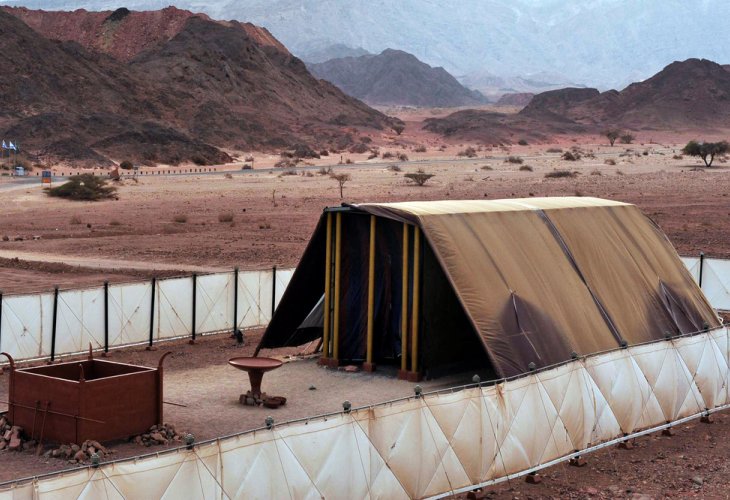Issues in the Bible
The Mystery of the Silver Sockets: How the Israelites Built the Tabernacle’s Foundations
How ancient craftsmanship, divine symbolism, and hidden engineering shaped the silver foundations of the Tabernacle
 (Photo: shutterstock)
(Photo: shutterstock)In Parshat Bamidbar, the Torah recounts the census of the Israelites. Each person contributed a half-shekel of silver as part of the count. The total of these contributions — from 603,550 Israelitesת amounted to 100 talents (kikarot) of silver.
According to the Torah, these talents of silver were used to cast the sockets (adanim) — the solid bases that supported the boards (kerashim) of the Tabernacle: “A talent for each socket, a talent for each socket of the sanctuary” (Shemot 38:27).
Each board had tenons or legs at its bottom that fit snugly into these silver sockets, securing the structure and adding beauty and dignity to the Mishkan.
The Mathematical Puzzle: How Big Could These Sockets Be?
At first glance, this all seems straightforward, until one tries to calculate the actual size of the sockets.
According to Maimonides (the Rambam), half a shekel of silver equals about 8 grams. If we multiply that by 603,550 contributors and divide by 100 talents, we find that each talent weighed only about 48 kilograms (106 pounds).
Now, 48 kg of silver occupies roughly 4,571 cubic centimeters, which is far too little to form a solid base measuring an amah (cubit) high by an amah and a half wide — the dimensions described by Rashi and the Midrash.
The amount of silver described in the Torah seems insufficient for the size of the sockets we imagine.
Ramban: The Sockets Were Silver Sheaths
The Ramban (Nachmanides) proposes that the sockets were not solid blocks but thin coverings of silver — more like plated bases. The “legs” of the boards were nearly the full width of the board itself, fitting into these thin silver casings.
According to this view, the phrase “a talent per socket” refers not to massive ingots but to symbolic or proportional allocations — the silver served as decorative plating rather than structural mass.
Rav Chaim Kanievsky: The Sockets Were Hollow
Rabbi Chaim Kanievsky suggests that the sockets were indeed of the stated size, but they were hollow, rather than solid silver blocks.
He explains that they were more like metal boxes or frames. After the boards were inserted, the interiors may have been filled with sand or earth to provide stability.
This resolves part of the weight issue but raises another: pure silver is too soft for such heavy-duty use.
Strength Through Alloy — or Symbolism
Some later scholars suggest a practical solution: the sockets were not made of pure silver, which is pliable and easily dented, but from a stronger silver alloy. This would have provided the necessary rigidity and weight without requiring unrealistic quantities of metal.
Another interpretive approach suggests that the phrase “a talent per socket” was symbolic rather than literal: the Israelites’ donations represented each person’s share in supporting the Mishkan. In reality, the artisans may have added additional metals to reach the required size and strength for the bases.
A Deeper Message: The Foundation of the Sanctuary
Beyond the engineering mystery lies a beautiful spiritual idea. The Adanim, the silver sockets, formed the foundation of the Sanctuary — just as the half-shekel contributions represented the foundation of the nation’s unity.
Each individual gave the same small amount of half a shekel, symbolizing that no one stands complete alone. Only when all the halves are joined together does the Tabernacle — the collective dwelling of the Divine Presence, truly stand firm.

